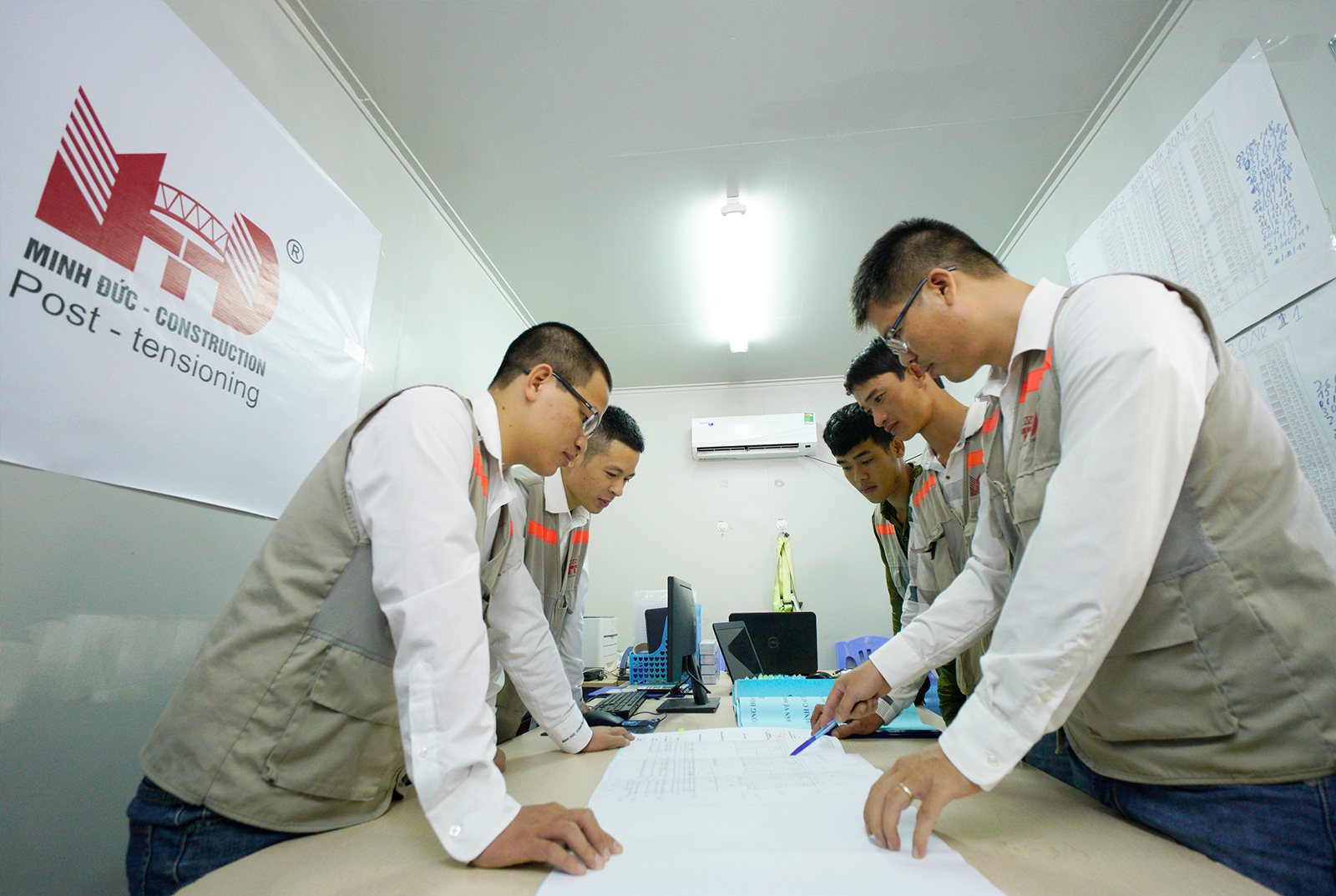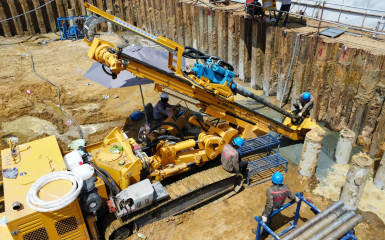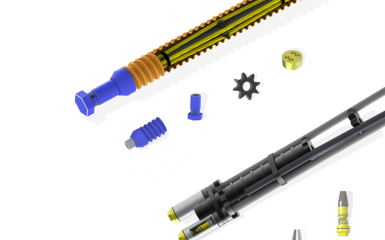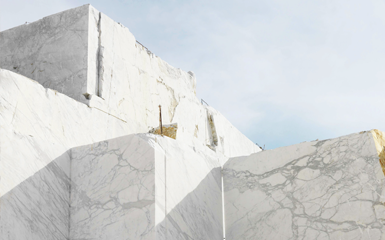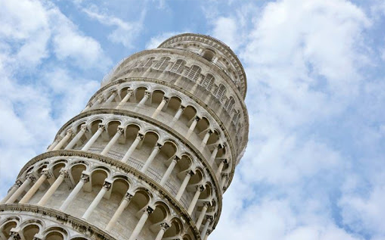SLOPE REINFORCEMENT MEASURES
Depending on the condition of the slope and possible causes of landslides, slope reinforcement can be carried out in 1 or a combination of directions: slope stability protection, slope surface protection and drainage. .
It will be necessary to distinguish slope reinforcement measures and slope protection measures, in this article we will go into details of slope reinforcement measures.
1. With Reinforcement
Soil
Ground anchor
The ground anchor is essentially a system of anchoring and anti-displacement for the structure by transmitting force into the good soil layer. In slope reinforcement, ground anchors do not work alone, but are often used to anchor retaining walls or frame beams.

In terms of structure, an earth anchor is usually a bundle of prestressed cables, with one end pinned to a good layer of soil that is partially grouted, called an anchor, the other end is tensioned and then wedged into the structure. , the rest is the anchor body.
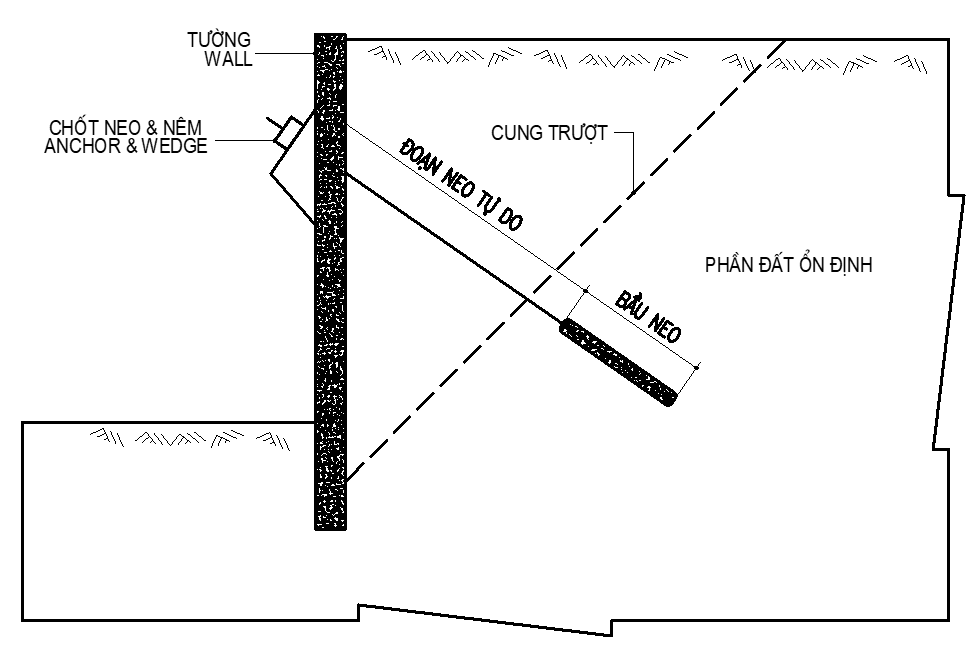
Ground anchors are often used in combination with pile walls in the construction of basement excavations, then both allow vertical excavation and do not need to use support, thus saving space.


In reinforcing existing roofs, ground anchors are preferred when the sliding arc is relatively large, or needing reinforcement at an inconvenient location to make retaining walls, etc.
Soil Nailing
Ground nails are similar to ground anchors in principle – ie anchoring the structure by transmitting force into the good soil layer.
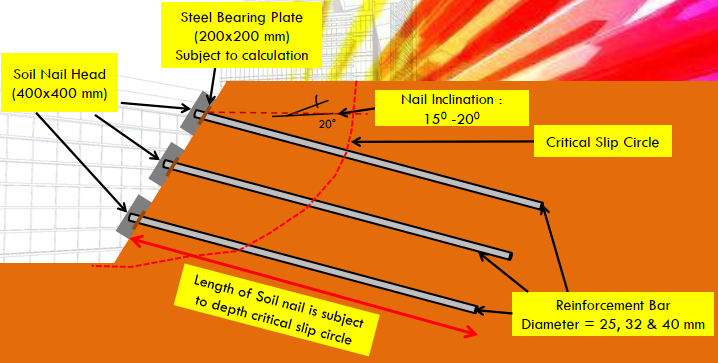
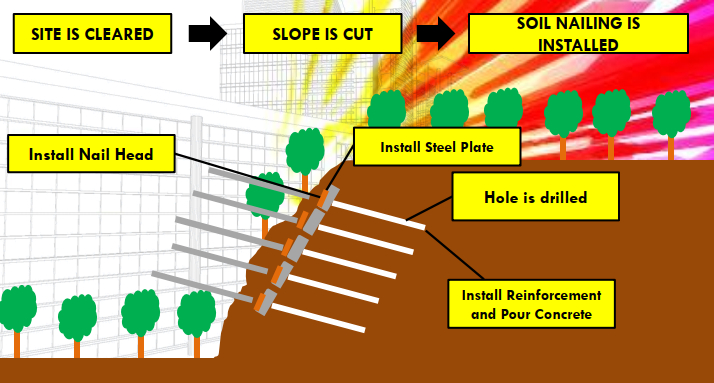
However, the structure of the earth nail differs in that it is reinforced cement piles that adhere to the soil throughout the length of the nail. Thus, earth nails are applied in cases where the good soil layer is not too deep.

On the other hand, because no prestressed reinforcement is used, earth nails can be combined with soft surface systems such as wire mesh or geogrid.
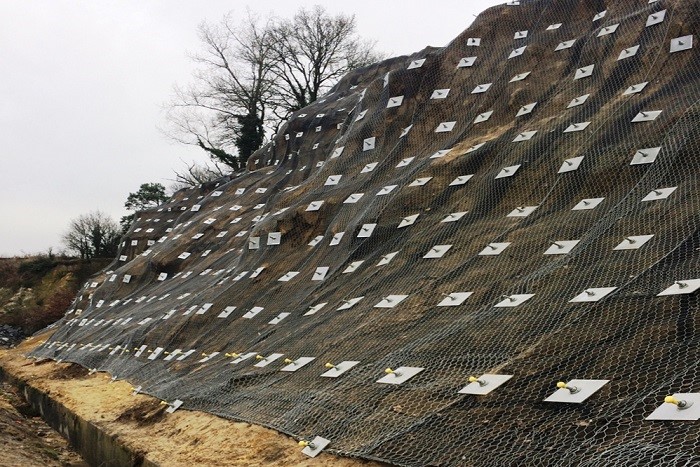
Geogrid/Geotextile
- Used for artificial embankment, each soil layer is now reinforced in tension by frictional contact with geotextile/grid layers.
- Reinforced ground roofs can reach very steep, even vertical slopes.

The sloping roof surface can be treated simply by folding the geotextile layers, or combined with brick blocks that both anchor the grid and create aesthetics.

2. No soil reinforcement
Rock fill (Rock fill)
It is a popular method in hilly areas with poorly drained soils.

The principle is that large aggregate rock is poured to form a well-drained, less erosive surface layer, protecting the underlying soil layer. This rock layer and the existing soil layer are separated by a geotextile layer.

Bạt taluy
The steeper the slope, the less stable it is and the more prone to landslides. The use of talus to reduce the slope is to limit this. Tarpaulin also includes trimming rough, landslide-prone soil masses, or for controlling hazardous locations.

3.Retaining wall

Author: KS Lê Duy Cường
VIET NAM STAY STRUCTURERS CONSTRUCTION JOINT STOCK COMPANY (SSC)
Publication date: 18/08/2022


